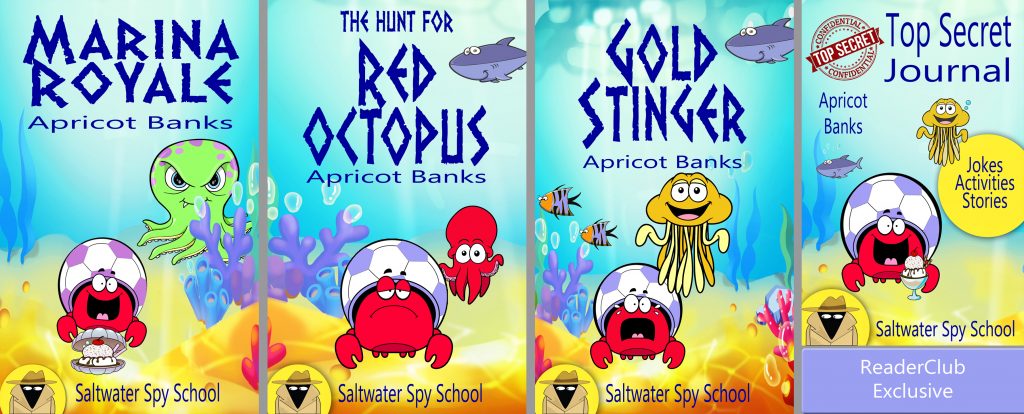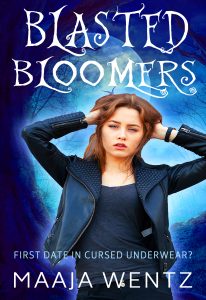Should you make your own book cover in 2022?
My earliest indie short stories came out before I learned how to make a proper book cover. Since then, I’ve learned to create my own book covers for urban fantasy and children’s books. Despite this, I still recommend hiring a cover designer to any author thinking of publishing a novel independently. It’s hard to beat training, experience, and artistic talent when it comes to standing out in a crowded marketplace.
The covers I made at the start of my indie journey still make me cringe.
These are recent covers I am proud of, but it took years to learn the necessary skills. A professional book cover designer could do something more striking, but I wanted to do my own covers for reasons of control and budget. Take a look and decide what you think. (Bonus: If you click on the image below, you can get a free ebook of Top Secret Journal for a kid in your life)

Homemade Book Covers For Free Books



Inside of a Dog (Ellery Queen Mystery Magazine published this story which I give away to members of my mystery loving readers group
Teach Yourself Book Cover Design
Rather than pay a designer $1000.00 to cover short stories, I taught myself cover design. This works for me in the mystery and children’s lit genres. Thriller covers follow a predictable formula I could probably emulate given enough hours, but urban fantasy is more demanding. It takes a professional to create book cover elements like dragons, glowing magic items, and digitally painted hair. My cover for Blasted Bloomers is okay, and regularly attracts downloads when I offer it up as a free ebook, but better can be bought.
Will I be making my own book cover for the Feeding Frenzy sequel? Not a chance. I purchased an excellent custom cover from the talented digital painter Heather Hamilton, before I had finished the first draft.
Still convinced you want to try making your own cover?
Do some research. The best way to create a book cover that attracts readers is to study the market and understand how that covers in that market signal genre and subgenre to readers. These visual signals are subtle but effective. Once you have studied hundreds of book covers in your genre, on Amazon or elsewhere, you will be ready to design your own. My top tips for those intrepid authors interested in creating their own covers:
- Choose at least three stock art images and layer them using PhotoShop or Gimp for a richer visual effect
- Be careful to choose a limited palette of colors which harmonizes with the genre of the book
- Research the most popular books in your genre and analyze the common elements of the covers (so that your book will look like it belongs among them)
- Limit the choice of fonts and follow the font conventions for your genre according to your research
- If you make the cover yourself, you can change it as fashions change or as you improve your design skills
- Keep the design uncluttered with only a few elements and one major focus point
- Use the rule of thirds or other formal design principles to draw the eye
- Look at your design in several sizes and ensure it looks good as a thumbnail image for digital sales
- Run your design by people with visual training or who buy books in the genre for feedback
- Have fun with it and don’t be afraid to throw away early drafts
The Original Novel, Warty Cover and All
Feeding Frenzy is my most popular work yet, garnering a Watty award on Wattpad before the revised version was published in 2018. The cover below was created by an artist on Fiverr. I should point out that, despite any weaknesses in the original design, it was successful on Wattpad, for which I’m very grateful. It just goes to prove that any advice I give should be taken with a large boulder of salt. I’m not a trained book designer, just a librarian and creative type obsessed by books and their covers.
I chose the stock photo image and believe this model’s expression spoke to the Wattpad readers. She embodied the upbeat, quirky nature of the story; while the moon and graveyard in the background hinted that this was an urban fantasy novel. That said, you should probably avoid the amateur weaknesses of this design.
- Mixed fonts (there are three different ones)
- A shaded bar under the author name (there are much more professional ways to give a contrast, such as by adding a gradient effect over the image)
- The color scheme is too busy with blue, white, grey, black, yellow, purple, and at least two shades of blue
- It doesn’t look like the other urban fantasy covers on the market

Should You make Your own book cover in 2022?
I made a lot of terrible covers when I started indie publishing short stories. Since then, I’ve learned to create my own book covers for mystery, urban fantasy, and children’s books. Despite this, I would still recommend hiring a cover designer to any author thinking of publishing a book independently. It’s hard to beat training, experience, and artistic talent when it comes to standing out in a crowded marketplace.
The covers I made at the start of my indie journey still make me cringe.
Rather than pay a designer $1000.00 to cover stories to give away, I taught myself cover design. Depending on your genre of choice, covers may be simple or challenging. Thriller covers follow a predictable formula and color scheme easy to emulate, given enough hours, but urban fantasy is demanding. It takes a professional to create book cover elements like dragons, glowing magic items, complex landscapes, and digitally painted hair.
Will I be making my own book cover for the Feeding Frenzy sequel? Not a chance. I purchased an excellent custom cover from the talented digital painter Heather Hamilton, before I had finished the first draft. The same image gets used on postcards, signs, websites, book retail sites, and social media and becomes the face of your book. If it looks professional, it makes you look professional.
In interview after interview, indie authors opine the most important selling feature of an indie book is the cover. If they had to choose between paying for editing or a cover, most would pony up for the cover. Personally, I would pay for both and produce a book indistinguishable from traditionally published works, but don’t let me scare you off. If you want to create your own cover, go for it. It’s possible to learn as you go, and improve and iterate your designs with experience.
If you make covers for short stories that you are giving away, you will save money and learn skills that will transfer to novels if and when you are ready. This idea might be terrifying or inspiring, depending on your comfort with new software and design. For those intrepid few who take on the challenge, I recommend looking at some of the free and inexpensive materials by Derek Murphy. Start with his free video series on how to design covers.
Hi, Maaja. I’m not a good one to comment on the cover’s clickability, because I’m not at all into the horror genre. But I want to say that I think the short description beneath it is excellent! Bravo!
Thank you so much! Did you just join the Loon Lake Reading Club? If so thanks! I’ll try not to disappoint.
Sunset orange for me.
Thanks for your input. I appreciate it.
I like B, I do like C a lot as well, however I personally find it peaceful and want to hang out there..heehee
Hey thanks for taking the time to look. If you signed up for the Reading Club you will automatically get the story for free.
Looking at them together, I pick A, but then I’m really partial to that tagline. Loved the cover for Feeding Frenzy.
Glad you like the Feeding Frenzy cover. I think the final cover will be very similar to this.